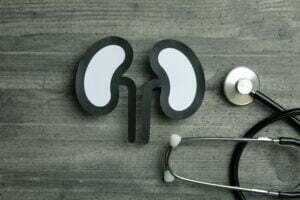The increasing popularity of wearable devices for tracking and diagnosing mental health problems has led to several questions about their implications. These include privacy concerns, the effectiveness of real-time data as a marker of treatment response, and the cost of such devices. We’ve explored some of these questions in this article.
Impact of wearable devices on mental and behavioral health
The global number of connected wearable devices has more than doubled in three years, rising from 325 million in 2016 to 722 million in 2019. By 2022, the number of devices is expected to exceed one billion.[1] It is hardly surprising that researchers are concerned about the impact of wearable devices on the mental and behavioral health of the general population. Recent studies have shown that wearable devices can help identify people at risk for mental health conditions. They can provide momentary feedback that could be valuable for prevention and treatment.
One such device is the smartphone. More than three-fourths of American adults own a smartphone[2] with sensors for measuring gravity and movement. However, this technology lags in practical mental health applications. This technology may provide a much-needed boost in the field of mental health. Wearable devices that encourage people to engage in regular physical activity could help people achieve this goal. But these wearables aren’t just about identifying the symptoms of mental illness; they can also provide information about physical and general activity.
Effectiveness of real-time data as a marker of treatment response
Recent studies have shown that real-time data on movement can accurately diagnose bipolar patients and healthy controls.[3] Actigraphy data are even more accurate than second-raters’ reports and the Structured Clinical Interview for the DSM. Furthermore, actigraphy data can accurately predict the severity of depression over two weeks.
Digital data from social media is now revealing new insights into human behavior, including substance use and mental health. For example, a deep-learning approach can predict substance use risks using the profiles of individuals on Instagram. Similarly, data from community-generated Instagram can be used to predict depression and other health behaviors among individuals. And these studies are just the beginning. We have a long way to go before real-time data can be used to help mental and behavioral health professionals determine which medications are effective.
The use of digital biomarkers in mental and behavioral health research holds tremendous promise. With the advancement of digital assessments, digital biomarkers can be continuously quantified, providing clinically helpful information for improving diagnostic processes and outcome measures in measurement-based care. These digital biomarkers can also create predictive models that reflect a confluence of factors over time and predict the likelihood of clinically significant events. Ultimately, such data can inform timely interventions and help clinicians make more informed decisions.
An excellent way to monitor progress and track the impact of treatment
There is a growing market for wearable devices for mental and behavioral health. These devices are increasingly available, and many individuals with serious mental illnesses use them. However, many of these devices are expensive. Despite these limitations, wearable devices for mental and behavioral health are an excellent way to monitor progress and track the impact of treatment. In addition, these devices can help caretakers keep track of out-of-reach behavioral health patients. Many of these devices can send alerts to caregivers, allowing them to check in on their patients remotely. Others can also monitor a patient’s mood by triggering reminders for medication or appointments. For example, an app can trigger an alert if a patient is in a particularly depressive mood.
Health Wearable Technology and Remote Patient Monitoring
Health wearable devices and remote patient monitoring (RPM) can transform care delivery by connecting patients and healthcare providers. DrKumo developed the world’s first highly-secure wearable RPM solution, which supports disease management protocols directly on a wearable device and operates from the comfort of patients’ homes to hostile disaster areas.
In a recent press release, DrKumo demonstrated the benefits of health wearable technology and RPM in Ukraine war areas. DrKumo’s enables real-time monitoring and secure transmission of data related to physical, mental, behavioral, nutritional, and sleep quality in fully integrated platform.
Takeaway
Health wearable technology and RPM can capture and transmit physiological data concerning one’s mental or behavioral state. These devices allow for real-time and unobtrusive patient assessment and monitoring.
Security and effectiveness of real-time data transmission has been demonstrated successfully by DrKumo. If you are a healthcare provider or military/veteran care coordinator looking for ways to advance healthcare through Remote Patient Monitoring, contact us or visit our website for more information: https://drkumo.com/
References:
1 Global connected wearable devices 2016-2022 | Statista. (n.d.). Statista; www.statista.com. Retrieved August 7, 2022, from https://www.statista.com/statistics/487291/global-connected-wearable-devices/
2 Demographics of Mobile Device Ownership and Adoption in the United States | Pew Research Center. (2021, April 7). Pew Research Center: Internet, Science & Tech; www.pewresearch.org. https://www.pewresearch.org/internet/fact-sheet/mobile/
3 Dunster, G. P., Swendsen, J., & Merikangas, K. R. (2020, September 12). Real-time mobile monitoring of bipolar disorder: a review of evidence and future directions – PMC. PubMed Central (PMC); www.ncbi.nlm.nih.gov. https://www.ncbi.nlm.nih.gov/pmc/articles/PMC7688933/









